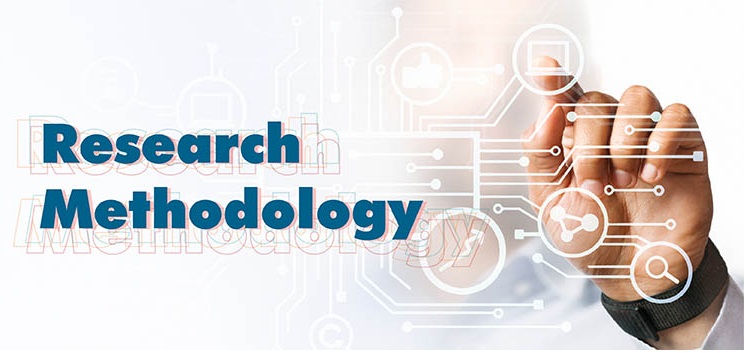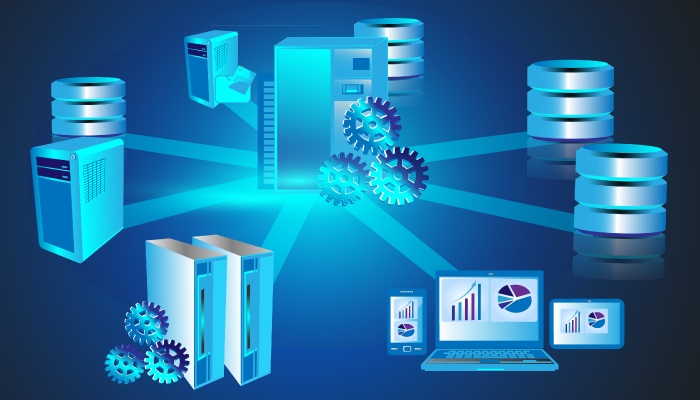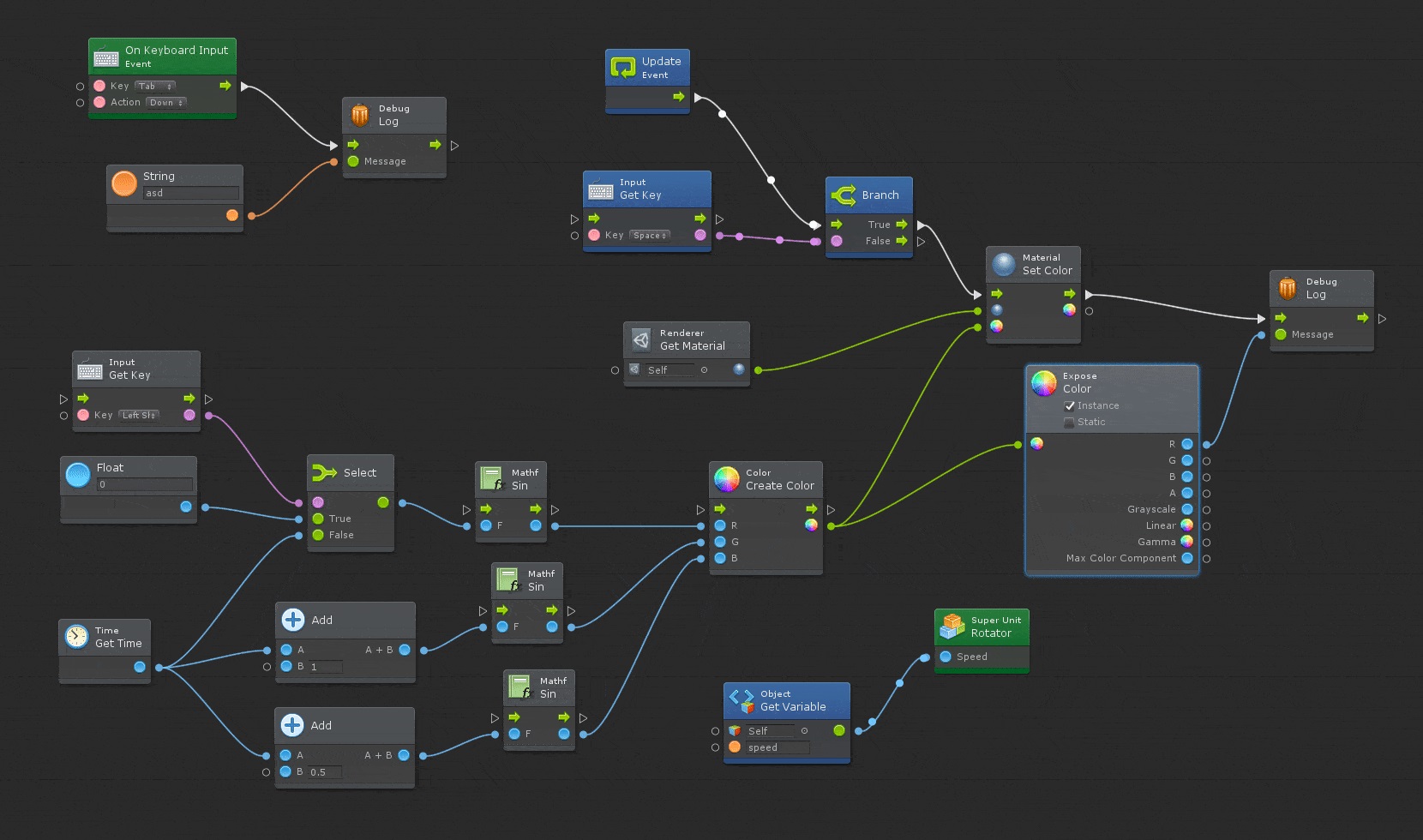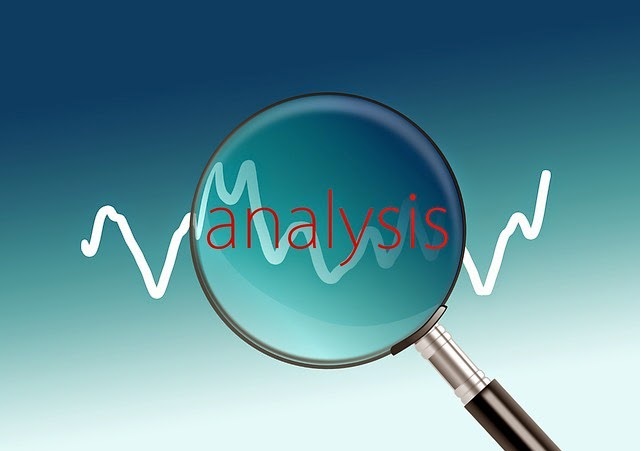Course Description
This is a University Basic Course Unit, compulsory for all Kampala University students. It imparts students with basic research skills required in their academic work. The Course Unit is also designed to help the University attain its vision of producing all round graduates. This course trains students how to conduct research and improve in the skills of innovation.
Course Objectives
1. To provide students with knowledge and skills of the basic research concepts such as data collection, data analysis, interpretation and projects management
Course Learning Outcomes
By the end of this course, the student will be able to
1. Demonstrate the knowledge of writing a research project report.
2. Demonstrate the knowledge of basic research concepts such as data collection, data analysis, and interpretation of results among others.
Indicative Content
1. Research methods and techniques for social sciences. (10 Hours)
2. The role of theories in research (10 Hours)
3. Preparation of the thesis or research project (10 Hours)
4. The research process: (10 Hours)
i) the formulation and development of a research problem, objectives, hypothesis,
ii) significance of research,
iii) scope of the study,
iv) limitations and de-limitations,
v) review of literature,
vi) research methodology,
vii) research theory and the theoretical framework procedures,
viii) methods of data collection,
ix) descriptive and inferential data analysis
x) data interpretation.
5. The concepts of validity and reliability of research, (10 Hours)
6. Significance of findings, (10 Hours)
i) Degrees of freedom are considered. Whenever possible, the student will be exposed to the use of computer
Study Materials
Relevant text books, power point slides, a projector, lap top and teaching aids necessary.
Mode of Delivery
Lectures, Tutorials, Lab sessions
Mode of Assessment:
Test 15%
Assignment 15%
End of semester examination 70%
Total 100%
Reading List
- Peter Ngau & Asfaw Kumsa, Research Design Data Collection & Analysis, Training Manual
- Wishwapra kashan,Research Methodology, Methods and Techniques-
- Designing Social Research and quantitative research Sage.

- Teacher: Emmanuel Eilu
Course Description
This is a practical course units which helps the student to start working on their own. It’s very essential in a manner that it enforces self-employment for the students before looking for jobs immediately they are from school. This course presents an in-depth exposure to computer hardware and operating systems. Students learn the functionality of hardware and software components as well as suggested best practices in maintenance and safety issues for computers. Through hands-on activities and lab sessions, students learn how to: assemble and configure a computer / install software and operating systems, troubleshoot hardware and software problems. It is designed for students who want to pursue careers in ICT administration and those who want to gain practical knowledge of how a computer works.
Course Objectives
1. To provide student with knowledge on computer repair, service and troubleshooting simple and complex computer problems. Students’ will be an effective technology workforce on campus, and have the opportunity to pass the A+ certification Exam.
2. To provide student with hands on training in computer repair and troubleshooting along with basic training in the Win Tel platform (DOS, Windows 95/98/2000 on IBM clone computers with Pentium II or older CPUs).
3. To enable student to pass the A+ certification Exam.
Course Learning Outcomes
By the end of the course the student will be able to:
1. Understand dismantling, assembling, upgrading, setting up of Windows Operating Systems and Application Programs of personal computers.
2. Understand the computer system maintenance, architecture, the functions, and testing of peripheral devices of a personal computer system
3. Handle the Troubleshooting of common problems in personal computers
4. Understand safety, ethics, health issues, and develop note taking and oral presentation skills.
Indicative Content
1. Introduction to the personal computer and its components (6 Hours)
2. Safety Lab procedures and Tool Use (6 Hours)
3. Basics of Preventative Maintenance and Troubleshooting Practical Session (6 Hours)
4. Computer Assembly – Step by Step approach (6 Hours)
5. Fundamental of Operating Systems (6 Hours)
6. Theoretical knowledge on internal component of system unit eg BIOS, slots, RAM, processors, ports, motherboard classification. Techniques to install, troubleshoot and replacement these internal components. (6 Hours)
7. Administration of computer (creation of users, controlling access to resources) (6 Hours)
8. Skills and techniques to handle Laptops and Portable Devices (6 Hours)
9. Theoretical knowledge on Categories of printers and scanners. Setting up, troubleshooting, servicing, Printers. Replacement/refilling of cartridges (6 Hours)
10. Computer networking and security maintenance. Communication Skills in computer repair and maintenance (6 Hours)
Study Materials
Relevant text books, power point slides, a projector, lap top and teaching aids necessary.
Mode of Delivery
Lectures, Tutorial, Lab practical
Mode of Assessment:
Test 15%
Assignment 15%
End of semester examination 70%
Total 100%
Reading List:
1. Jean A., (2007). A+ Guide to Managing and Maintaining Your PC. Sixth Edition.
2. Charles River, (2004): PC Repair and Maintenance: A Practical Guide, Media, Inc. ISBN: 1-58450-266-5
3. A+ PC Technician's Pocket Reference by Brian Schwarz 2005
4. Mark Edward Soper, 2003, PC Help Desk in a Book: The Do-it-Yourself Guide to PC Troubleshooting and Repair.
5. Morris Rosenthal, Start Your Own Computer Business: Building a Successful PC Repair and Service Business

- Teacher: Emmanuel Eilu
Course Description
Database Management Systems will concentrate on the principles, design, implementation and applications of database management systems in organizations. The predominant system for business, scientific and engineering applications at present are used. This course provides a managerial understanding and approach to the technical subject of database management. The course will illustrate the important role that database systems play in an organization and provide you with a background to understand the subject, and a foundation upon which to build your management decisions. This course is designed to investigate how database management system techniques are used to design, develop, implement and maintain modern database applications in organizations.
Course Objectives:
1. To introduce students to the concepts of relational database management system (RDBMS), particularly:
· What an RDBMS is, and how it differs from older flat file systems.
· The importance of the data model, its building blocks, and how it relates to business rules.
· How data is organized through the use of integrity rules and primary and foreign keys.
· The importance of relational set operators, the data dictionary, and indexes.
· The fundamental differences between logical and physical database design.
2. To provide students with knowledge to enable them to prepare the physical relational database schema for a simple business application
3. To explain to students the responsibilities of a Database Administrator in an organization
4. To provide students with an understanding of essential DBMS concepts such as: database security, integrity, concurrency, distributed database, and intelligent database, Client/Server (Database Server), Data Warehousing.
5. To provide students with knowledge and practical skills to design and build a simple database system and demonstrate competence with the fundamental tasks involved with modeling, designing, and implementing a DBMS.
Course Learning Outcomes
Upon successful completion of this course, the student should be able to:
1. Explain the concepts of relational database management system (RDBMS), particularly:
· What an RDBMS is, and how it differs from older flat file systems.
· The importance of the data model, its building blocks, and how it relates to business rules.
· How data is organized through the use of integrity rules and primary and foreign keys.
· The importance of relational set operators, the data dictionary, and indexes.
· Explain the fundamental differences between logical and physical database design.
2. Prepare the physical relational database schema for a simple business application
3. Describe the responsibilities of a Database Administrator in an organization
4. To develop an understanding of essential DBMS concepts such as: database security, integrity, concurrency, distributed database, and intelligent database, Client/Server (Database Server), Data Warehousing.
5. To design and build a simple database system and demonstrate competence with the fundamental tasks involved with modeling, designing, and implementing a DBMS.
Indicative Content
1. Introduction to Database Systems (12 Hours)
i) Overview
ii) A Historical Perspective
iii) File Systems versus a DBMS
iv) People Who Deal with Databases
v) Advantages of a DBMS
vi) Describing and Storing Data in a DBMS
vii) Structure of a DBMS
viii) The Relational Model
ix) Levels of Abstraction in a DBMS
x) Queries in a DBMS
2. Database Management System Features (12 Hours)
i) Maintain data dictionary - 'metadata'
ii) Maintain application data
iii) Manage integrity constraints for application data
iv) Manage shared access to data
v) Facilitate backup and recovery of database
vi) Provide security: passwords, views, encryption
vii) Facilitate data availability through replication of database
viii) Provide utilities for common task
3. Database System Development Life Cycle (6 Hours)
i) Describe the life cycle of the systems development project including an emphasis on database analysis, design, through to implementation activities
ii) Discuss the rules of the individuals who design, implement, use, and administer databases
4. Database Administrator Responsibilities (6 Hours)
i) Selection, installation and maintenance of DBMS
ii) Manage data dictionary tables and information repositories
iii) Monitor and improve DBMS performance
iv) Manage end user access to DBMS
v) Approve application database design
vi) Develop and administer database policies
5. Database Modelling (6 Hours)
i) Overview of Data Modelling
ii) Using UML
iii) Context Modelling
iv) Entity Relationship Modelling
v) Enhanced Entity Relationship Modelling
6. Schema Refinement and Normal Forms (6 Hours)
i) Introduction to Schema Refinement
ii) Functional Dependences
iii) Normalization
7. Database Management and Administration: (6 Hours)
i) The need for, and importance of, data and database administration
ii) Different ways of processing a database,
iii) The need for concurrency control, security, and backup and recovery,
iv) Typical problems that can occur when multiple users process a database concurrently,
v) The use of locking and the problem of deadlock, Distinction between optimistic and pessimistic locking,
vi) Describe specific design and implementation strategies for improving database security,
vii) The basic administrative and managerial DBA functions, distributed database processing, the concept of object-relational databases
8. Data Storage and Indexing: Storing Data: Disks and Files (6 Hours)
9. Practical Session with Microsoft Access (6 Hours)
Study Materials
Relevant text books, power point slides, a projector, lap top and teaching aids necessary.
Mode of Delivery
Lectures, Tutorials, Lab sessions, Case analysis
Mode of Assessment:
Test 15%
Assignment 15%
End of semester examination 70%
Total 100%
Reading List
1. Connolly T. & Begg C., (2010). Database Systems: A Practical Approach to Design, Implementation and Management. 5th Edition, USA; Pearson Education, Inc.
2. A Guide to SQL, 7th Edition by Pratt, published by Course Technology, Thompson Learning, ISBN 0-619-21674-3
3. Rob, Peter, Coronal, Carlos, Database Systems Design, Implementation and Management, 7th Edition, ISBN 1-4188-3593-5.
4. R. Ramakrishnan and J. Gehrke; (2000). Database Management System, 2nd Edition.
5. Silberschatz A., Korth H.F. & Sudershan S., (2011). Database System Concepts. 6th Edition, Singapore; McGraw Hill.

- Teacher: Emmanuel Eilu
Course Description
This Course Unit provides a broad overview of the threats to the security of information systems, the responsibilities and basic tools for information security, and the levels of training and expertise needed in organizations to reach and maintain a state of acceptable security. The course presents the legal requirement for all users of information systems to take annual computer security awareness training. This course is designed to help you understand the importance of information systems security, or ISS, its guiding principles, and what it means for your agency
Course Objectives
1. To introduce students to the concepts of information security
2. To provide students with knowledge of an organization’s information assets and the development, documentation, and implementation of policies, standards, procedures, and guidelines used to design, monitor, and secure operating systems, equipment, networks, application and those controls used to enforce various levels of availability, integrity, and confidentiality.
3. To provide students with knowledge required to identify the Protection techniques for the entire facility, from the outside perimeter to the inside office space, including all of the information system resources. Address the principles, means, and methods of disguising information to ensure its integrity, confidentiality and authenticity.
4. To provide students with knowledge and understanding of the security measures used to provide availability, integrity, and confidentiality.
5. To provide students with practical skills required to carry out Implementations to preservation and recovery of business operations in the event of outages.
Course Learning Outcomes
By the end of this course, the student will be able to:
1. Identify and understand the concepts in information security, professionals a fully-immersed, zero-distraction, all-inclusive CISSP training and certification experience,
2. Identify an organization’s information assets and the development, documentation, and implementation of policies, standards, procedures, and guidelines. Understand the concepts, principles, structures, and standards used to design, monitor, and secure operating systems, equipment, networks, application and those controls used to enforce various levels of availability, integrity, and confidentiality.
3. Identify the Protection techniques for the entire facility, from the outside perimeter to the inside office space, including all of the information system resources. Address the principles, means, and methods of disguising information to ensure its integrity, confidentiality and authenticity.
4. Understand the security measures used to provide availability, integrity, and confidentiality.
5. Carry out Implementations to preservation and recovery of business operations in the event of outages.
Indicative Content
Topics include:
1. Domain 1 – Access Control Systems & Methodology: (6 Hours)
i) Security Principles, Identification, Authentication, Authorization
ii) Single sign-on, Access Control Models and Methods, Access Control Techniques and Technologies, Access Control Administration, Access Control Monitoring, Treats to Access Control.
2. Domain 2- Telecom & Network Security: (6 Hours)
i) OSI Model and TCP/IP, LAN Media Access Technologies
ii) Cabling and Type of Transmission, Network Topology and Devices
iii) LAN Media Access Technologies, Protocols and Network Services
iv) Firewalls and Firewall Architecture, Internets, Intranets and Extranets, MAN and Wan Technologies, Remote Access an VPN’s
v) Network and Resource Availability
3. Domain 3 – Security Management Practices: (6 Hours)
i) Fundamental Principles o Security, Risk Analysis Security Programs Data
ii) Classification, Layers of responsibility and Security Awareness
4. Domain 4 – Applications & Systems Development Security: (6 Hours)
i) Database Systems and Database Management, System Life Cycle Phases/Software
ii) Life cycle Development Process, Application Development Methodology Attaches.
5. Domain 5- Cryptography: (6 Hours)
i) Types of Ciphers, Methods of Encryption- Algorithms
ii) Symmetric and Asymmetric Systems, Hybrid Encryption Methods
iii) Public Key infrastructure (PKI), One-Way Functions & Message Integrity
iv) Hash Algorithms and Key Management, Link and End-to-End Encryption Email Standards and internet Security, Attacks
6. Domain 6 – Security Architecture & Models (6 Hours)
i) Security Model, Computer and System Architecture, Security Models, Security Modes of
ii) Operation, System evaluation Methods, Certification and Accreditation, Open and Closed
iii) System, threats to Security Models and Architectures
7. Domain 7 – Operations Security, controls and Protections, Monitoring and Auditing (6 Hours)
i) Threats and Vulnerabilities, Email and Internet
8. Domain 8 – Business Continuity planning & disaster recovery planning (6 Hours)
i) Business continuity Planning (BCP), Disaster Recovery Planning (DRP)
9. Domain 9- Law, Investigation & Ethics: (6 Hours)
i) Ethics, Operations Security, Liability and Ramifications
ii) Types of Laws, Intellectual Property Laws, Computer crime Investigations
iii) Phone Phreakers:
10. Domain 10 – Physical Security (6 Hours)
i) Physical Security Controls, Facility Management, Physical Security Component Selection Process.
Study Materials
Relevant text books, power point slides, a projector, lap top and teaching aids necessary.
Mode of Delivery
Lecturers, Tutorials, Lab sessions, Case studies
Mode of Assessment
Test 15%
Assignment 15%
End of semester examination 70%
Total 100%
Reading List:
1. Tipton, Harold F. and Micki Krause. (2000). Information Security Management
2. Philip E. Fites 2001, Information Systems Security: A Practitioner's Reference Second Edition
3. Essential Computer Security by Tonny Bradley, Syngress Publishing Inc.
4. Van No strand Reinhold 2002; Info Systems Security

- Teacher: Emmanuel Eilu
Course Description
This course is an introduction to Programming, using Visual Basic. We will be using Visual Basic 6.0, 2005 (either the Express Edition or through Visual Studio) as the programming tool and language. The course uses a hands-on approach, with minimal lecturing through the online tutorials. Unlike a typical face-to-face course, students will be expected to work in an independent, self-paced manner. Instructor notes will give an overview of the chapter, and describe the material for each week and programs which are expected to be submitted by the students.
Course Objectives
1. To provide students with general knowledge required to understand many of the general concepts of any programming language.
2. To provide students with the ability to design, create, test and debug fully functioning programs using the new Visual Basic .NET language.
Course Learning Outcomes
By the end of this course, the student will be able to:
1. Demonstrate understanding of the general concepts of any programming language.
2. Demonstrate knowledge and skills in the design, create, test and debug fully functioning programs using the new Visual Basic .NET language.
Indicative Content
Unit 1: Introduction (10 Hours)
Features of Visual Basic, Visual Basic environment, Visual Basic Integrated Development Environment, Working with Controls, Object Naming Conventions, Properties Methods and Events, Event Procedures, Data Types in Visual Basic, Variables, Fixed Length Vs. Variable Length String, Assigning values to Variables, The Literals, Data Type Conversion, Variable Default Values, Implicit and Explicit Variable Declaration, Defining Named Constants, Variable Scope, Variable Lifetime, Static Variables, Operators in Visual Basic; Using Math Operators, Concatenation Operator, Comparison Operator, Logical Operator, Operator Precedence, Manipulating Forms; Loading, Showing and Hiding Forms, FORM_LOAD Event, Basic Controls; Command Button, The LABEL Control, The Text Box Control, The CheckBox Control, The OptionButton Control, The Frame Control, The List Box Control, The CheckBox Control-Icon, The HScrollBar and VScrollBar Controls, The Image Control, The Picture Box Control, Shape and Line Control, The Timer Control, File System Controls:DriveListBox, DirListBox and FileListBox, Understanding Focus, Some Useful Events, Control Area.
Unit 2: Visual Basic Control Structures (10 Hours)
Introduction; Variables and Constants, Control
Flow, Decision Structures; The If Statement, The If Function, Select Case
Statement, Looping Structures, Nesting Loops, Existing from Loops, Problems
with Loops; Arrays; Need for Arrays, Declaring Fixed-Size Arrays, Setting Upper
and Lower Bounds, Loops and Arrays, Arrays that contain other Arrays, Dynamic
Arrays, FOR EACH……NEXT loop
Unit 3: Procedures, Functions and Modules (10 Hours)
Introduction, Types of Procedures; Sub
Procedures(Sub routines), Function Procedures, Property Procedures; Working with Procedures, working with
Sub-procedures, Working with Function procedures, The sub main procedure; Code Modules,
Form Modules, Standard Modules,
Class Module
Unit 4: Library Functions (10 Hours)
Introduction, String Functions, Numeric Functions, Date and Time Functions, Miscellaneous Functions
Unit 5: Menu Controls (10 Hours)
Creating Menus in Visual Basic; Menu Basics, Designing Menus, Menu Title and Naming Guidelines, Assigning Access Keys, Shortcut Keys, Separating Menu Items, Creating Pop-up Menus, Controlling Menus at Run Time.
Unit 6: Data Control (10 Hours)
The Data Terminology, Data Control; Using Data Control, Accessing Data through RecordSet Object, Navigating the RecordSet, Modifying Database through the RecordSet, OLE Container Control, Creating an Embedded Object at Runtime, Creating a Linked Object, Binding OLE Container Control to a Database, Visual Basic Control Categories; Adding and Removing ActiveX Controls, Common Dialog Boxes, Microsoft Windows Common Controls, Adding a ToolBar; Imagelist, Creating Toolbar, Adding Status Bar, Dialog Boxes; Predefined Dialog Boxes, Custom Dialog Boxes
Study Materials
Relevant text books, power point slides, a projector, lap top and teaching aids necessary.
Mode of Delivery
Lectures, Tutorials, Seminars
Mode of Assessment:
Test 15%
Assignment 15%
End of semester examination 70%
Total 100%
Reading List
1. Diane Zak. (2010). Microsoft Visual Basic ; RELOADED 4th edition
2. Guy Fouche and Trey Nash. (2010). Accelerated VB
3. Thearon Willis, Bryan. (2010). Newsome.Beginning Visual Basic
4. Ed Koop, Anne Prince & Joel Murach. (2002) Murach’s visual basic 6, BPB publications.
5. Sumita Arora, Dhanpat Rai & Co., Delhi, (2002, 2004). .Informatics Practices: A Text book for Class XII,
6. Michael Halvorson. (2010). Microsoft Visual Basic 2010
7. Mohammed Azam. (2006). Programming with Visual Basic 6.0,

- Teacher: Emmanuel Eilu
Course Description
This course provides a practical approach to systems analysis and design; it shows how to apply the six phases of the systems development life cycle. It includes expanded coverage of data flow diagrams, data dictionary, and process specifications. This course introduces a variety of new software used by analysts, designers to manage projects, analyze and document systems, design new systems and implement their plans. It introduces also a recent coverage of UML, wireless technologies and ERP; web based systems for e-commerce and expanded coverage on RAD and GUI design.
This Course Unit will present a practical approach to systems analysis and design using a blend of traditional development with current technologies. It will also serve as preparation for Course Units where systems implementation is the goal. The role of the systems analyst will be considered as well the skills necessary to interact with users, management, and other information systems professionals in a typical business organization. The five phases of the systems development life cycle (SDLC) will be defined and described in detail. An in-depth study of the supporting components, i.e. process flowcharting, data flow and entity relationship diagramming, data dictionary, will be presented. Case studies will promote critical-thinking skills as well as provide the foundation for a student project that incorporates the skills attained throughout the quarter. There is no programming requirement for this class
Course Objectives
1. To provide students with knowledge and skills in systems planning, systems analysis, systems design, system implementations, and system operation and support phases of the SDLC.
2. To provide students with knowledge and skills of the Implementation of SDLC in solving a real world information technology problem.
3. To provide students with the knowledge to enable them develop a system analysis toolkit which can help him in developing the five stages of SDLC.
4. To provide students with an understanding of the role of the a system analyst and how he interacts with users, managers and other IT staff
5. To provide students with the knowledge to enable them to develop a practical approach to systems analysis and design using blend of traditional developments and current technologies.
Course Learning Outcomes
By the end of this course, the student will be able to:
1. Describe in details the systems planning, systems analysis, systems design, system implementations, and system operation and support phases of the SDLC.
2. Implement the five phases of the SDLC in solving a real world information technology problem.
3. Develop a system analysis toolkit which can help him in developing the five stages of SDLC.
4. Learn how to play the role of a systems analyst and how he interacts with users, managers and other IT staff
5. Develop a practical approach to systems analysis and design using blend of traditional developments and current technologies.
Indicative Content
1. Systems Analysis and Design Environment, (6 Hours)
2. Information Systems Components, (6 Hours)
3. Business Information systems and coordination, (6 Hours)
4. Systems Development Methodologies, (6 Hours)
5. System Development life Cycles, Systems, (6 Hours)
6. System Analysis, Requirements Modelling, Data and Process Modelling object, (6 Hours)
7. Process Description, Documentation, (6 Hours)
8. Designing a new System, (6 Hours)
9. Application Architecture Systems (6 Hours)
10. Implementation, Application Development, Installation and Evaluation, Systems Operations and support. (6 Hours)
Study Materials
Relevant text books, power point slides, a projector, lap top and teaching aids necessary.
Mode of Delivery
Lectures, Tutorials, Lab sessions
Mode of Assessment:
Test 15%
Assignment 15%
End of semester examination 70%
Total 100%
Reading List
1. Kendall & Kendall (2005) Systems Analysis and Design, 6th Edition, Pearson Prentice Hall
2. Mark. L & David. D; An introduction to systems Analysis Techniques, Prentice Hall
3. I. Hawryszkiwyz, (2005) Introduction to System Analysis and Design; Fourth Edition; New Delhi- 110001
4. Shelly, 2006, Analysis and Design Techniques Required: Systems Analysis and Design, 6th Edition, Course Unit Technology, ISBN:0-619-25510-2
5. Whitten Bentley Dittman, 2000: System Analysis & Design methods

- Teacher: Emmanuel Eilu

